ESCAPE
Walking with the golden ancients — following footsteps through time and civilisations in Pafuri Triangle
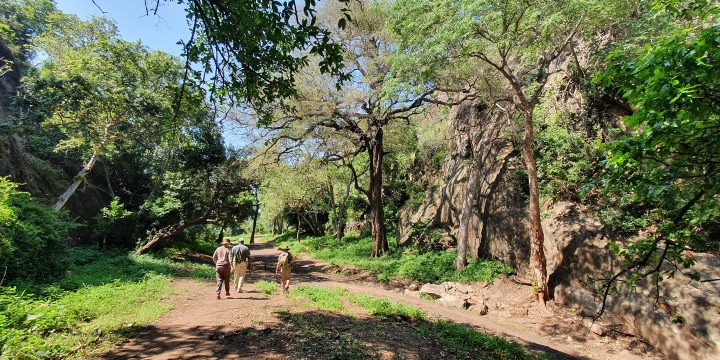
A magical trip to the ancient gold-trading city of Thulamela in the far northern part of the Kruger National Park changes the narrative of South Africa’s history and tells the tale of a magnificent civilisation that flourished here for some 400 years between the 13th and 17th centuries.
South African history tends to start in the Cape with the arrival of the Settlers, or with the creation of the Zulu Kingdom in the 1800s. “But what if the story of South Africa’s history instead begins here in the Pafuri Triangle in northern Kruger?” asks Professor Peter Delius, a renowned historian who has been researching Thulamela and its trading system.
It is late afternoon and we are standing atop Thulamela hill, overlooking the valley of the ancients. We are deep in the heart of the wild, near the confluence of the Limpopo and Luvuvhu rivers. We climbed up a steep stony path past a series of reconstructed stone walls to get to these hillside ruins that were once a royal citadel.
There’s great majesty here. It’s not just the extraordinary views of the floodplain below, which is dotted with baobabs and herds of browsing elephants. It’s also the powerful sense of history, the contrast between this vast stillness and learning that right here was once a flourishing kingdom.
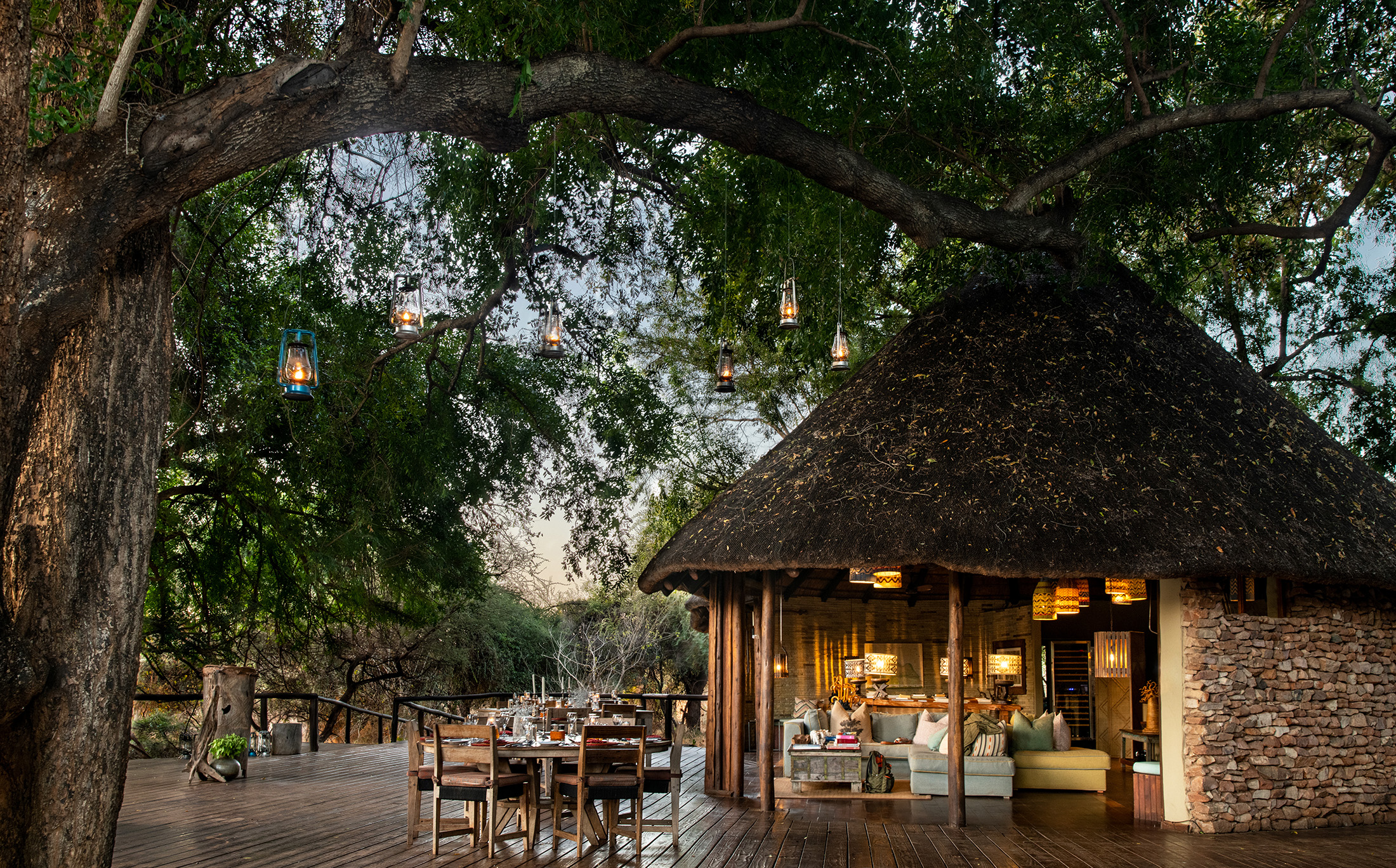
The deck at Pafuri Camp invites the visitor to relax and take in the natural beauty. (Photo: Bridget Hilton-Barber)
From around 1000 CE, as gold emerged to outrival the ivory trade, Thulamela was a city of skilled goldsmiths, blacksmiths, ivory carvers and traders, a system more sophisticated than we imagined and one that lasted for 400 years before it declined, likely because of drought and war.
It wasn’t until as recently as 1983 that Thulamela was rediscovered by a park ranger, and it wasn’t until the 1990s, after apartheid, that the site was excavated on a large scale and restored, funded by Goldfields and led by archaeologist Sidney Miller.
We imagine the soundscape of drums, the clink of stones; we feel the history underfoot. About 1,000 people lived on this hill and 2,000 more below. The people here traded ivory, gold, leopard skins and rhino horn along the Indian Ocean trade route in exchange for cloth, glass beads, porcelain, copper and bronze. This trade connected Thulamela in turn to Mapungubwe (about 1075 to 1220 CE), a World Heritage Site on the Limpopo River in South Africa, as well as Great Zimbabwe (about 1100 to 1450 CE) in Zimbabwe. Thulamela outlasted both.
We walk among the hilltop ruins, first together then scattering, each person taking a moment to disappear into the majesty. What an incredible part of South African history, with still so much to be learnt and explored. On the way back to camp, we see a leopard. The ranger turns off the vehicle. The night is studded with fireflies.
Operated by Return Africa, Pafuri Camp is the springboard for Origin Safaris’ remarkable Thulamela experience, a combination of archaeology and history plus wonderful wildlife and scenery. Return Africa has just been awarded guiding rights to the Thulamela site, which may not be visited without an armed guide, and Origin Safaris, a tour operator specialising in heritage and archaeology safaris, has just launched this package.
Pafuri Camp overlooks the Luvuvhu River and features a series of elegant tents reached by wooden walkways, a convivial pool and bar area, and a main meeting, greeting and eating area where guests gather, sitting at night around a fire under the stars, probably one of humanity’s oldest known pleasures.
History of civilisations
We listen to an evocative talk by Dr Tim Forssman, senior lecturer in cultural and heritage studies at the University of Mpumalanga, who gently navigates us through humanity’s emergence from the primordial soup, as it were, through the different stages from hominid to human.
Humanity evolved on the immense card table of the African savannah, wrote South African anthropologist Robert Ardrey, and there is evidence that our hominid ancestors lived in the Pafuri region about 1.5 million years ago. This early stone tool culture lasted until about 250,000 years ago, before it advanced into the Middle Stone Age and then into the Late Stone Age hunter-gatherers some 30,000 years ago.
Forssman has a fantastic mobile museum that shows the different layers of ages: stone tools, beads, pottery and bones pertaining to different eras. We get to hold in our very own hands some of the knives hewn from the hands of the ancients. They fit so well.
Read more in Daily Maverick: Bush magic — a two-week deep dive into the Kruger National Park
The next morning we visit Crooks Corner, the confluence of the Limpopo and Luvuvhu rivers, with present-day Zimbabwe to the north and Mozambique to the east. It’s called Crooks Corner because it was an easy escape route for outlaws and fugitives in the early 20th century.
This is big sky and wide space country. It’s a baking 35°C even though the morning is young, and we sit in the shade of a nyala berry tree, grateful for good coffee, cold water and the promise of a gin gong at noon.
From 400 CE, Iron Age Bantu pastoralists moved into the area, settling among the local San hunter-gatherers. It was a critical frontier. From around 650 CE a trading system emerged, linking Pafuri to Chibuene, a site close to modern Vilanculos on the Mozambican coast.
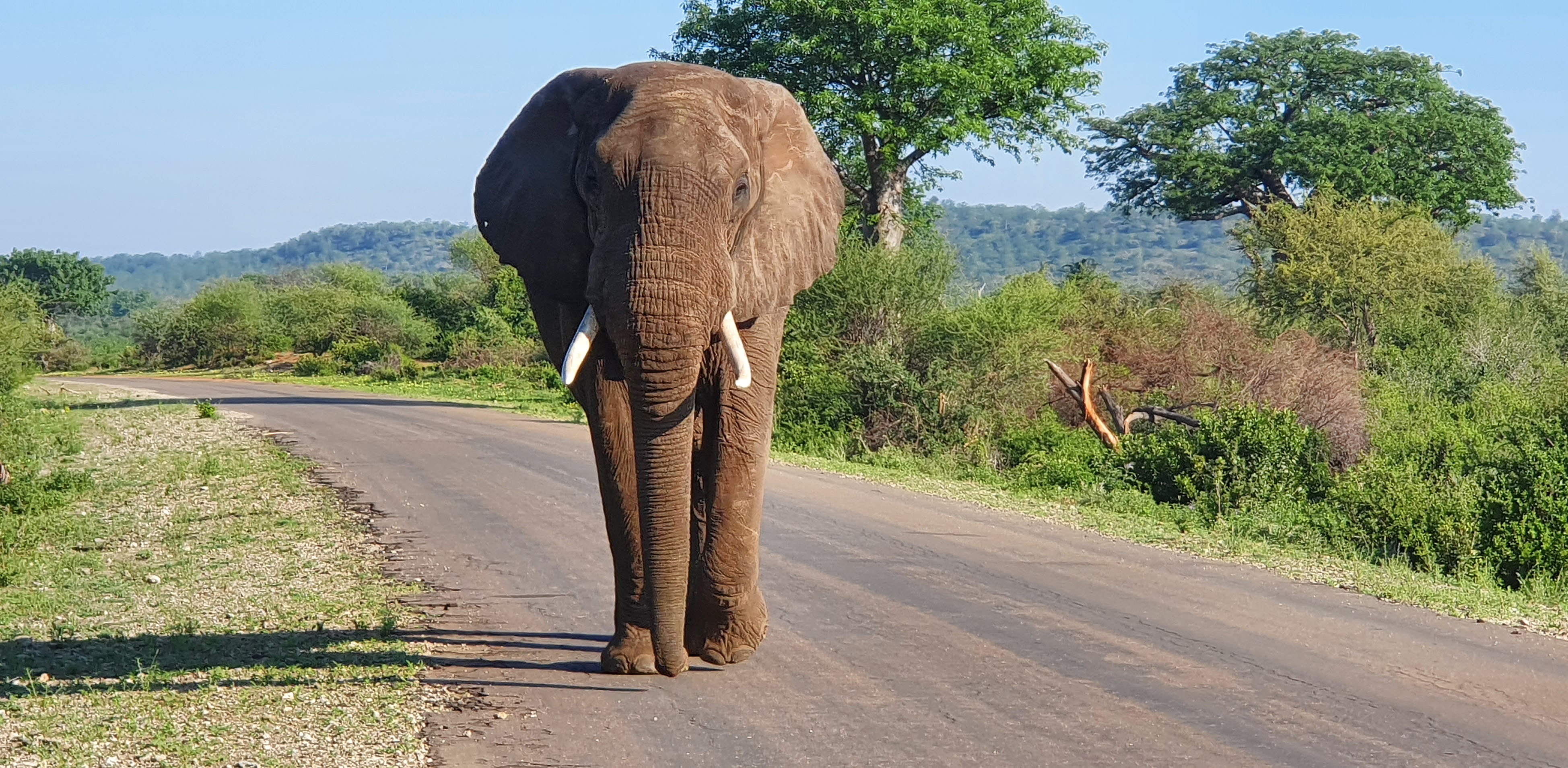
A mighty specimen bids us a good day. (Photo: Bridget Hilton-Barber)
Trade routes
From 900 CE this trading system stimulated the emergence of states — most famously at Mapungubwe and Great Zimbabwe but including Thulamela. “What is exciting,” says Delius, “is that the trading system linked to societies 1,500km to the west in Botswana and 1,000km south to Natal.”
Beads and chicken bones helped archaeologists trace key nodes in this trade, including Madagascar, the Persian Gulf, India, Indonesia and China. The beads — “the DNA of trade routes” — were a prototype currency made of fired glass from Iran and Iraq, finished and polished in Southeast Asia. The chicken bones found at some of the African sites were found to be those of the red jungle fowl that originated in South Asia and were brought here by Indian traders.
We close our eyes and listen to imaginary ancient sounds: the morning rooster, a call to prayer, women singing, water slapping the sides of dhow boats.
Ivory was the main commodity on the Indian Ocean trade route, a reminder of how long and tumultuous the relationship between elephants and people has been. Indian traders, who were sophisticated sailors, came via Madagascar and Chibuene in search of ivory — not just tusks but decorated ivory jewellery that was highly sought after in India. Pafuri then was teeming with elephants, the route here was accessible and the Indian settlers had pretty much hunted out or domesticated their own elephants. In the distance, we hear the call of a fish eagle.
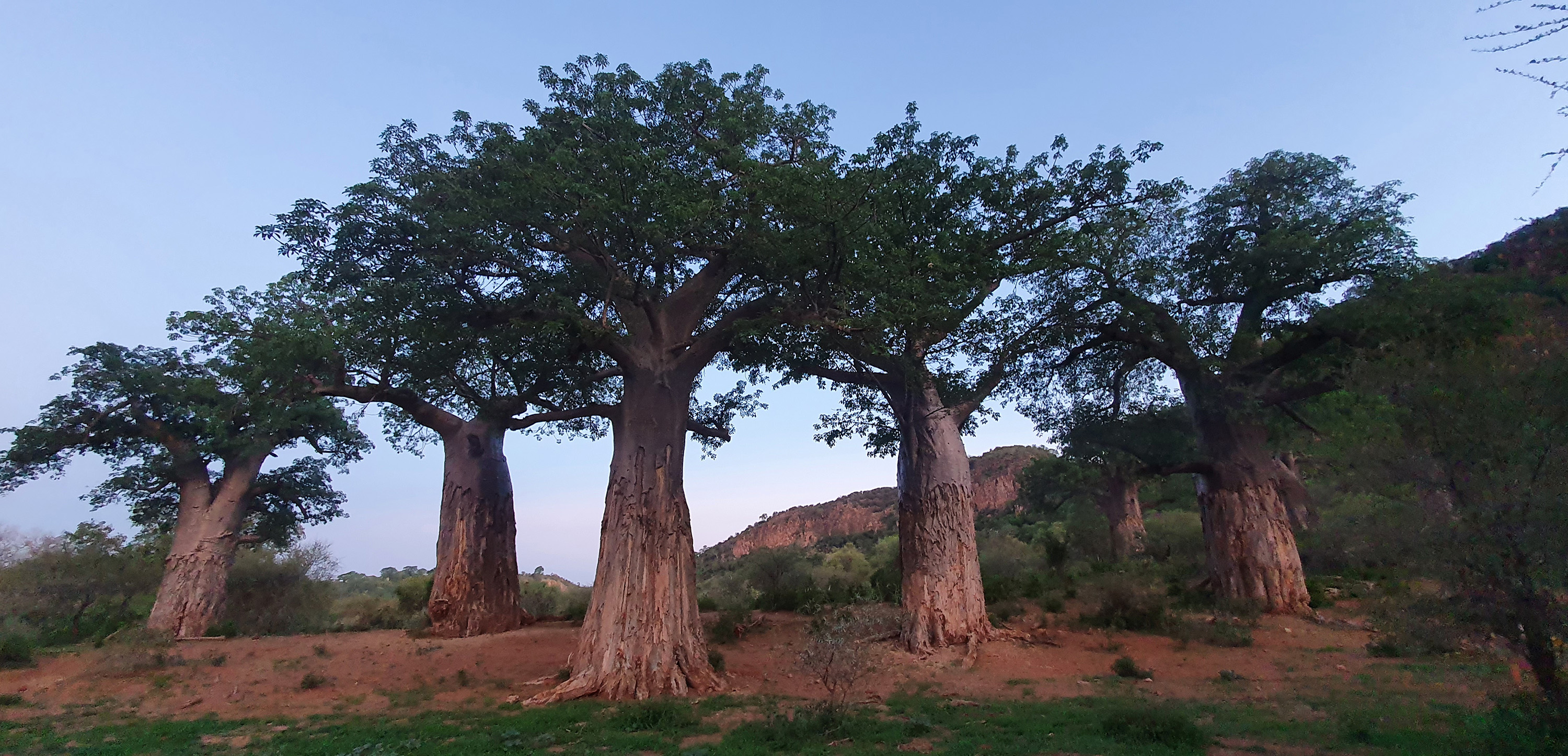
The stillness of baobabs, of which there are many in this far northern part of the Kruger National Park. (Photo: Bridget Hilton-Barber)
We leave Crooks Corner and drive slowly through the fever tree forests, past stately hardwoods and surreal baobabs. We stop to see the birds (the Pafuri area has an astonishing diversity of birdlife). We see an elephant scratching its stomach with a stick held in its trunk.
That night, fires are lit in the boma, food is enjoyed and stories told. We hear from the staff the poignant tale of how this land once belonged to the Makuleke people. They were forcibly removed under apartheid, but their land was returned in a landmark restitution case in 1998. Pafuri is part of the Makuleke contractual concession, and Return Africa pays the community a concession, provides employment and invests in community projects.
There is singing and dancing, stirring moments and more wine. The buffaloes are resting right outside the boma. DM
This story first appeared in our weekly Daily Maverick 168 newspaper, which is available countrywide for R29.
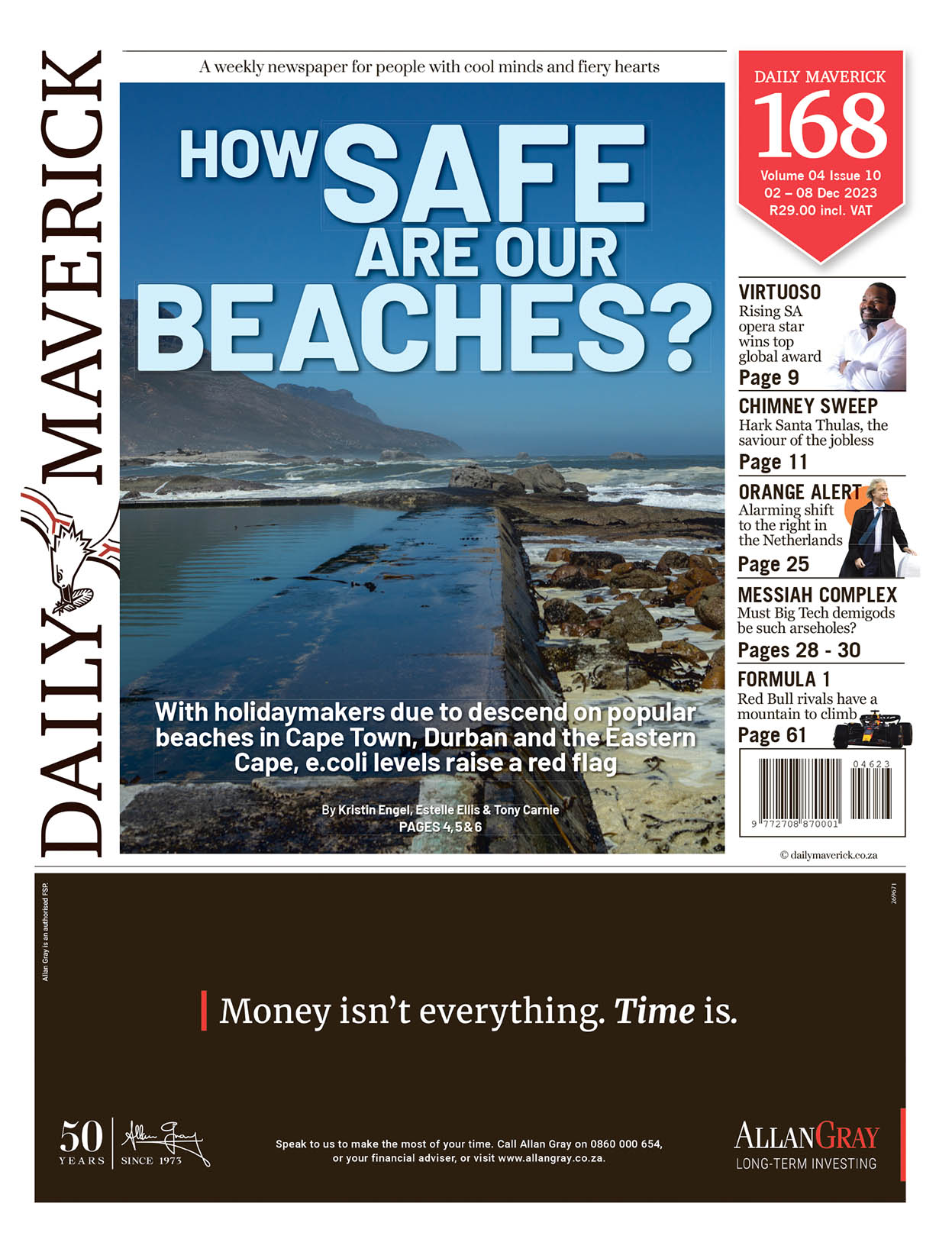







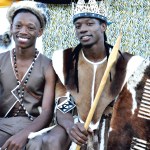












No mention is made of the research that was done by the University of Pretoria for 20+ years and the Mapungubwe artifacts collection, kept at the university.
The Mapungubwe ‘museum’ is open to the public.
Fascinating. Great story.
It seems to me a great pity that such a wonderful and important sight, in the Kruger Natonal Park “of hte people” is being ring-fenced by commercial trade. But wonderful story all the same.
Enjoyed the story but a pity that for the vast majority of the population this story is the closest we will ever get to this national heritage that excludes us due to the fees charged for this “tour”.
The Kruger Park and its biosphere are indeed magnificent and majestic but they are magnificent and majestic by virtue of their wildlife, their almost completely intact ecosystems, their unique ecologies, their biodiversity and their incredible natural beauty not by virtue of any crude Stone Age cultures or peoples that once existed in their environs. The people and cultures of this area, both past and present, pale into insignificance when compared to the spectacular jewel of the Kruger, the sanctity of which must be protected at all and any costs.